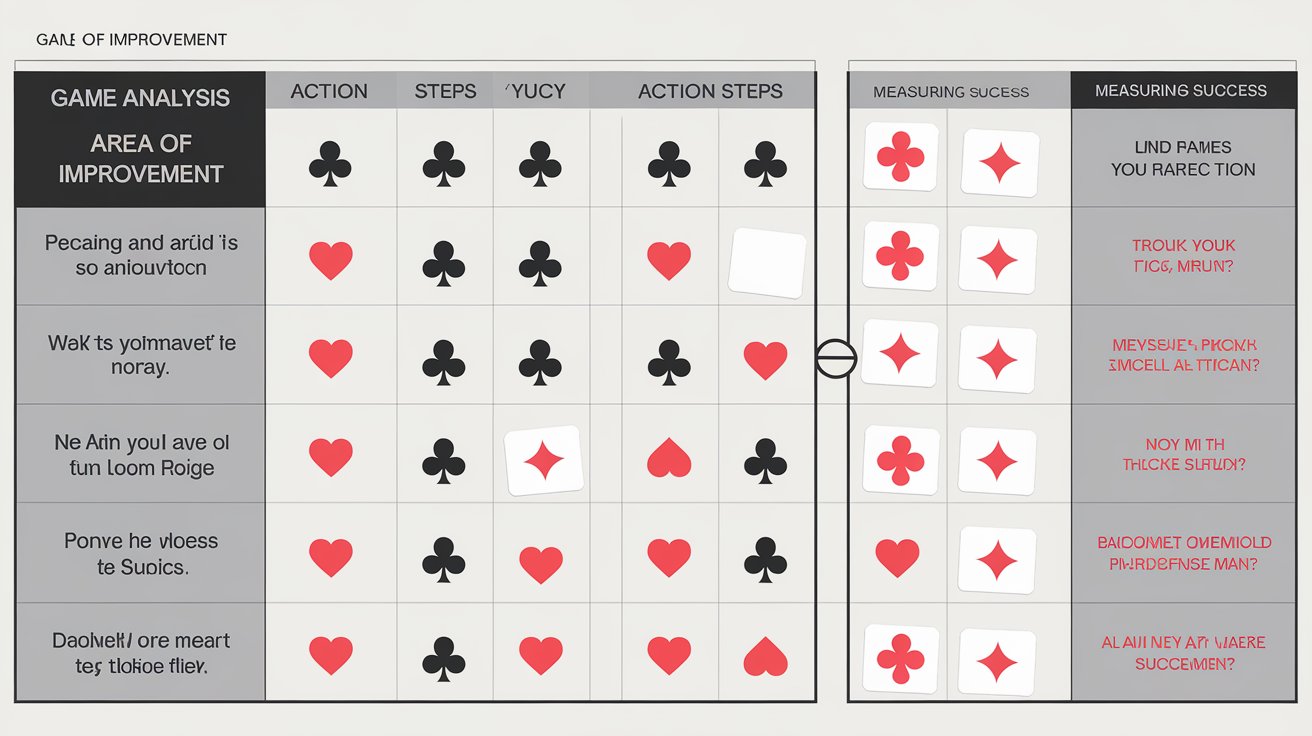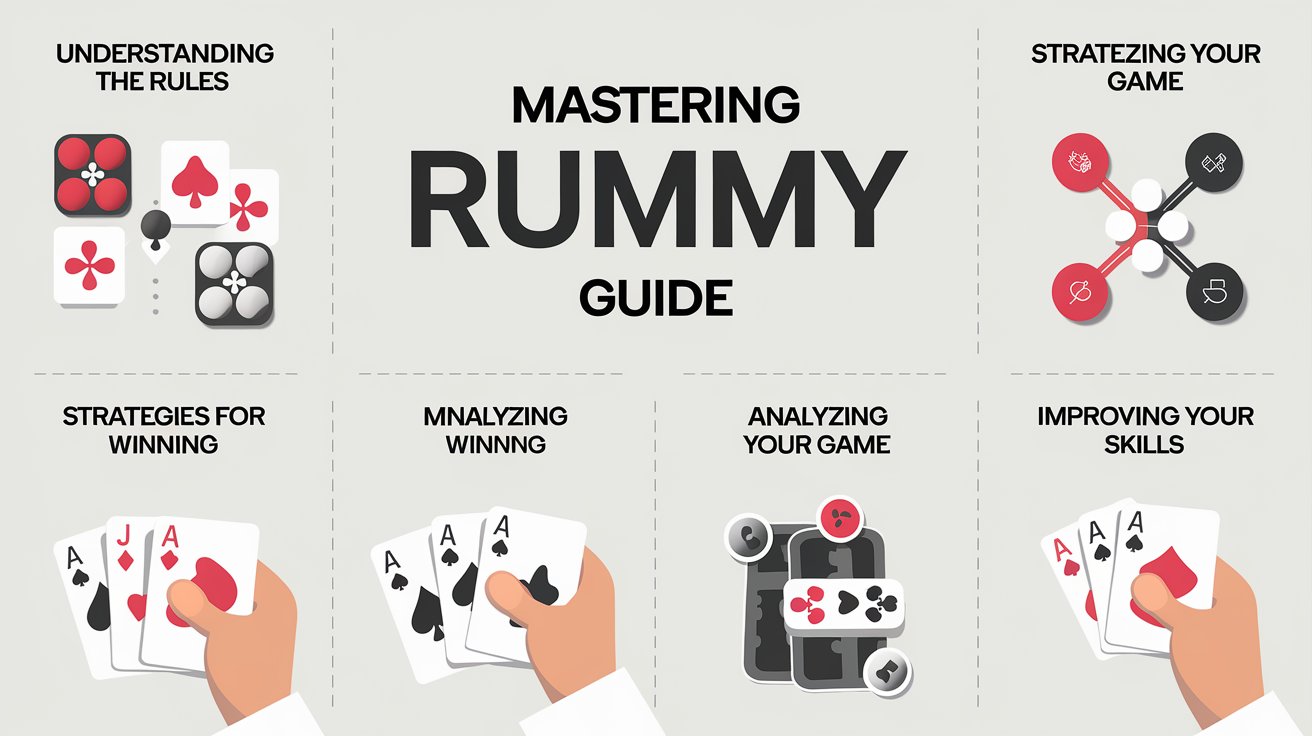Rummy is more than just a card game—it’s a battle of wits, strategy, and skill. Whether you’re a casual player enjoying a quick round with friends or a competitive enthusiast aiming to dominate online platforms, improving your rummy game can be incredibly rewarding. But here’s the catch: improvement doesn’t happen by chance. It requires analyzing your gameplay, identifying weaknesses, and fine-tuning your strategies. In this comprehensive guide, we’ll walk you through how to analyze your rummy game for improvement, offering practical tips, actionable steps, and expert insights to elevate your skills.
By the end of this 1500+ word blog, you’ll have a clear roadmap to dissect your rummy performance, spot patterns, and turn losses into learning opportunities. Let’s dive in!
Why Analyzing Your Rummy Game Matters

Rummy isn’t a game of pure luck—skill plays a massive role. According to seasoned players, roughly 70% of success in rummy stems from strategy and decision-making, while the remaining 30% depends on the cards you’re dealt. So, if you’re losing more often than you’d like, it’s not just “bad luck.” Analyzing your gameplay helps you:
- Pinpoint Mistakes: Identify where you’re going wrong—whether it’s discarding the wrong card or misjudging your opponent’s moves.
- Refine Strategies: Adapt your approach based on what works and what doesn’t.
- Boost Confidence: Understanding your strengths builds a solid foundation for consistent wins.
- Stay Ahead: In competitive rummy, analysis keeps you one step ahead of your rivals.
Ready to become a rummy master? Let’s break it down step by step.
Step 1: Record Your Games for Review
The first step to analyzing your rummy game is to keep a record. Memory alone won’t cut it—details fade, and you might overlook critical moments. Here’s how to do it effectively:
How to Record Your Rummy Games
- Online Platforms: If you play on apps like RummyCircle or Junglee Rummy, use the replay or game history feature (if available). Take screenshots or notes of key moves.
- Offline Play: Jot down quick notes after each round—cards you picked, discarded, and your melds (sets and sequences).
- Mental Snapshots: For casual games, train yourself to mentally log pivotal moments, like when an opponent picks from the discard pile.
What to Track
- Your starting hand.
- Cards you picked and discarded.
- Opponents’ discards (if observable).
- When and how you declared (or lost).
Pro Tip: Use a simple spreadsheet or a notebook with columns for “Hand,” “Moves,” “Opponent Actions,” and “Outcome.” Over time, this data becomes a goldmine for analysis.
Step 2: Evaluate Your Opening Hand Strategy

Your starting hand sets the tone for the game. A common mistake among beginners is clinging to a weak hand instead of planning early. Here’s how to analyze this phase:
Assess Card Distribution
- High-Value Cards: Do you have too many ungrouped face cards (J, Q, K) or 10s? These are worth 10 points each in most rummy variants, so holding onto them without forming melds can cost you.
- Potential Melds: Can you spot a sequence (e.g., 5-6-7 of hearts) or a set (e.g., 8 of spades, clubs, and diamonds) right away?
- Jokers/Wild Cards: How many do you have, and are you using them effectively?
Questions to Ask
- Did I overestimate my hand’s potential?
- Was I too slow to discard high-value cards I couldn’t meld?
- Did I prioritize pure sequences (a must in Indian Rummy) early enough?
Example: Suppose your hand is 3♠, 4♠, Q♥, K♦, 9♣, J♠, and a Joker. A smart move is aiming for 3♠-4♠-5♠ (picking a 5♠) while discarding Q♥ or K♦ early. If you held onto Q♥ hoping for a set that never came, that’s a red flag.
Step 3: Master the Art of Discarding
Discarding is where many players falter. A single wrong discard can hand your opponent the game. To analyze this:
Review Your Discards
- Did you discard a card your opponent picked up immediately? This suggests you’re misreading their strategy.
- Are you discarding high-value cards too late? Waiting too long racks up points against you in games like Points Rummy.
- Are your discards predictable? If you always toss low cards early, opponents might catch on.
Opponent Observation
Pay attention to what your rivals pick from the discard pile. For instance:
- If they grab a 7♠ after you discard it, they might be building a sequence (6♠-7♠-8♠) or a set (7s of different suits).
Improve Your Discarding
- Bluff Occasionally: Discard a mid-value card (e.g., 6 or 7) to mislead opponents about your hand.
- Prioritize Safety: Avoid discarding cards that fit common sequences (e.g., 5, 6, 7) unless you’re sure your opponent doesn’t need them.
Step 4: Analyze Your Meld-Building Skills

In rummy, forming valid melds—sets (three or four cards of the same rank) and sequences (three or more consecutive cards of the same suit)—is the goal. Here’s how to critique this:
Sequence vs. Set Balance
- Pure Sequence First: In Indian Rummy, you need at least one pure sequence (no Jokers) to declare. Did you focus on this early, or did you chase sets instead?
- Over-Reliance on Jokers: Using Jokers too soon might leave you scrambling for a pure sequence later.
Flexibility Check
- Were you rigid with your melds? For example, holding 5♥-6♥-7♥ and refusing to break it for a quicker declaration might delay your win.
Timing
- Did you declare too early with a weak hand, leaving points on the table?
- Did you wait too long, letting an opponent declare first?
Case Study: Imagine your hand is 2♣-3♣-4♣, 8♦-8♠-8♥, and a Joker. You’re one card away from declaring (say, a 5♣). If you spent turns chasing that 5♣ while discarding useful cards, analyze whether dropping the set (8s) and focusing elsewhere would’ve been faster.
Step 5: Study Your Opponents’ Moves
Rummy isn’t played in a vacuum—your opponents’ actions provide clues. Analyzing their moves can sharpen your instincts.
Key Observations
- Discard Pile Picks: If they take a 10♥, they might need 8♥-9♥ or another 10. Adjust your discards accordingly.
- Frequent Draws: Are they picking from the draw pile often? They might be struggling—pressure them by speeding up your game.
- Endgame Signals: Hesitation or sudden discards could mean they’re close to declaring.
Questions to Reflect On
- Did I miss obvious cues about their hand?
- Was I too focused on my cards to notice their strategy?
Pro Tip: Practice “reverse engineering” their hand based on discards and picks. It’s not foolproof, but it builds intuition over time.
Step 6: Assess Risk vs. Reward Decisions
Every rummy game involves calculated risks. Analyzing these choices separates good players from great ones.
Common Scenarios
- Holding High Cards: Did keeping that K♠ hoping for a set cost you when your opponent declared?
- Dropping Out: In games like Pool Rummy, did you drop too soon (losing points) or too late (racking up more)?
- Bluffing Risks: Did your bluff backfire by giving away a key card?
How to Improve
- Weigh the odds: If you need one card for a meld but have three ungrouped high cards, it might be safer to discard than wait.
- Learn from losses: A 20-point loss from dropping early beats an 80-point loss from holding on.
Step 7: Reflect on Emotional Control
Rummy tests your patience as much as your skill. Emotional decisions—like chasing a losing hand out of frustration—can sabotage your game.
Self-Analysis Questions
- Did I panic when my hand looked weak?
- Did I rush my declaration out of impatience?
- Was I rattled by an opponent’s fast play?
Tips for Better Control
- Take a breath between moves—rushing leads to errors.
- Treat each loss as data, not a personal failing.
Step 8: Practice with Purpose
Analysis without action is pointless. Use your insights to practice deliberately.
Drills to Try
- Mock Games: Play solo or with friends, focusing on one skill (e.g., discarding or meld-building).
- Online Simulators: Many rummy apps offer practice modes—use them to test strategies.
- Review Past Games: Revisit your records weekly to spot recurring mistakes.
Set Goals
- Reduce high-value card losses by 20% in a week.
- Declare with fewer points in your hand over 10 games.
Bonus Tips for Advanced Rummy Players
- Track Probabilities: With 13 cards per player in a 52-card deck, estimate the odds of drawing a needed card (e.g., 4 suits of 5♠ = 4/52 initially).
- Adapt to Variants: Points Rummy rewards speed, while Pool Rummy favors caution—adjust your analysis accordingly.
- Join Communities: Discuss hands with other players on forums or social media to gain fresh perspectives.
Conclusion: Turn Analysis into Wins
Improving at rummy isn’t about playing more—it’s about playing smarter. By recording your games, evaluating your strategies, and learning from both wins and losses, you can transform your rummy skills from average to exceptional. Start small: pick one area (like discarding or meld-building) and analyze it in your next five games. As you build this habit, you’ll notice patterns, sharpen your instincts, and stack the odds in your favor.
So, grab your deck, start tracking, and take your rummy game to the next level. Have a favorite analysis trick or a game-changing moment to share? Drop it in the comments below—let’s keep the rummy conversation going!

Zareb Saleh is a journalist at Gulf Today and a ghostwriter for Gameoholic, specializing in gaming, technology, and digital culture. With a keen eye for industry trends, he delivers insightful stories that engage and inform readers.
